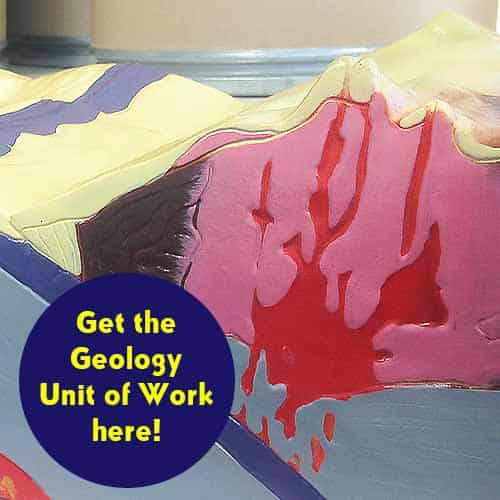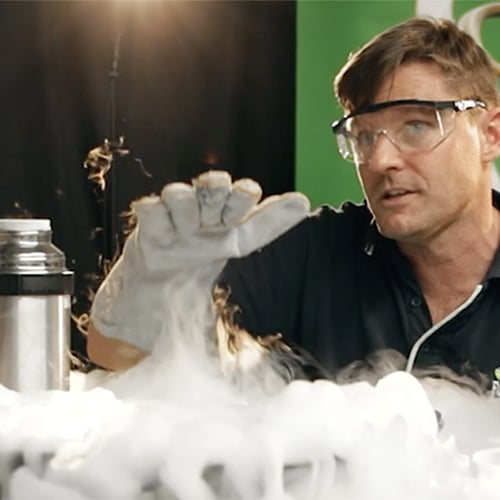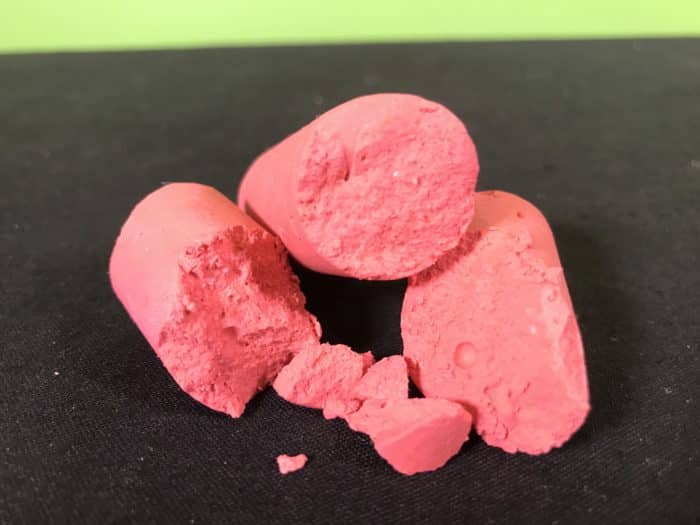You will need:
- Cheap pavement chalk
- Coldwater in a bowl
- Hot water in a bowl and tongs
- Freezer and a plastic bag
- Patience!


Get the Unit of Work on Geology here!
- The Earth’s layers, the rock cycle, volcanoes, earthquakes & more!
From soil science to mineral testing, these hands-on experiments your students will discover the importance of natural resources and the role of plate tectonics in shaping our world.
Includes cross-curricular teaching ideas, student quizzes, a sample marking rubric, scope & sequences & more

School science visits since 2004!
– Curriculum-linked & award-winning incursions.
– Over 40 primary & high school programs to choose from.
– Designed by experienced educators.
– Over 2 million students reached.
– Face to face incursions & online programs available.
– Early learning centre visits too!
Why Does This Happen?
Freeze-thaw weathering is common in mountainous areas where the temperature is around freezing point. This type of weathering is caused by the expansion and contraction of water within porous rocks. As ice crystals form, they grow larger, attracting liquid water from the surrounding pores. The ice crystal growth weakens the rocks which can then crack, exfoliate or shatter with the stresses imposed.
Chalk is a quite porous material, containing numerous air pockets. Soaking the chalk replaced the air with water, setting up a situation where the chalk could be broken by rapidly changing the temperature of the materials.
Variables to test
- Try chalk blocks vs smaller chalk. Does this make a difference?
- What happens if you repeatedly cool the chalk with dry ice and then reheat with boiling water?
From the rock cycle to volcano formation, we’ve got your geology unit covered!
Get in touch with FizzicsEd to find out how we can work with your class.
Geology Rocks!
Years 1 to 6
Maximum 30 students
School workshop (NSW & VIC)
60 or 90 minutes
Online Class Available
Geology Rocks!
Years 1 to 6
Maximum 30 students
School workshop (NSW & VIC)
60 or 90 minutes
Online Class Available
STEM Full Day Accelerator - Primary
Designed from real classroom experiences, this modular day helps you create consistently effective science learning that directly address the new curriculum with easily accessible and cost-effective materials.
































Comments